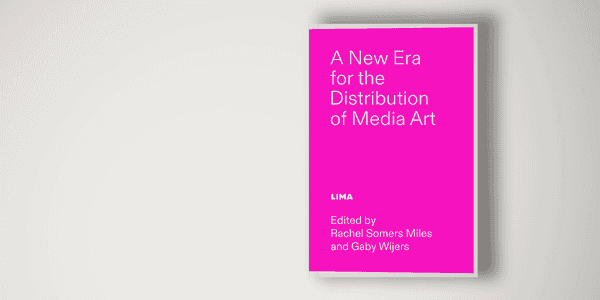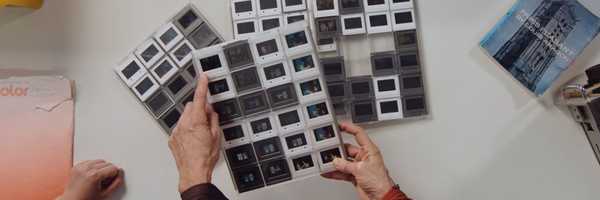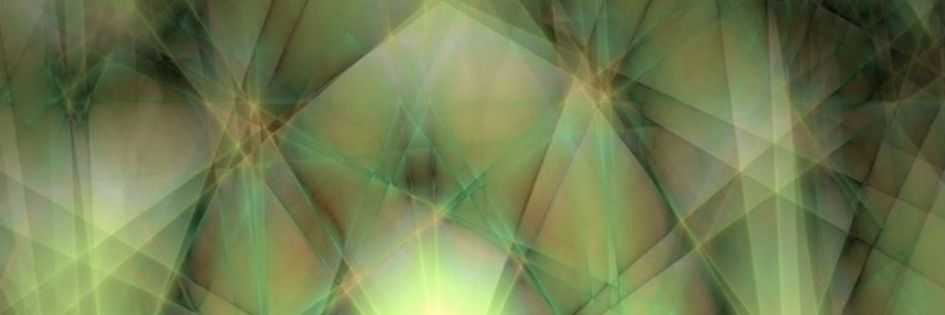
Story of the Collection
The history of media art in the Netherlands and LI-MA's collection
Find out more about the compelling history of media art in the Netherlands and its most prominent collection. And learn how the collection's continued relevance, research opportunities and LI-MA’s ongoing and unique distribution efforts are supporting a vibrant artistic scene.
The LI-MA Collection: Urgent And Experimental
From video art from the early 1970s to performances, media installations and digital art of today. The LI-MA collection is an international leader in the field of media art.
Navigating the crossroads of visual art, science and technology, the collection offers an original, critical look at the use of media, digitization and other social changes. The LI-MA collection is unique, innovative and accessible to all.
Highlights from the Collection
- Early work by Nan Hoover – one of the founders of video art along with Bill Viola, Douglas Gordon and Nam June Paik. Hoover’s poetic work from the 1970s explores the limits of light.
- Sk8monkeys on Twitter by artist duo Jodi. In their interactive installation, these Internet art pioneers took to the extreme the idea that social media would only produce meaningless chatter.
- Recent work by Zeno van den Broek. The composer, who explores the tension between the human and the digital, had an algorithmic composition performed by robotics. GPT wrote the lyrics, which are sung by a human.
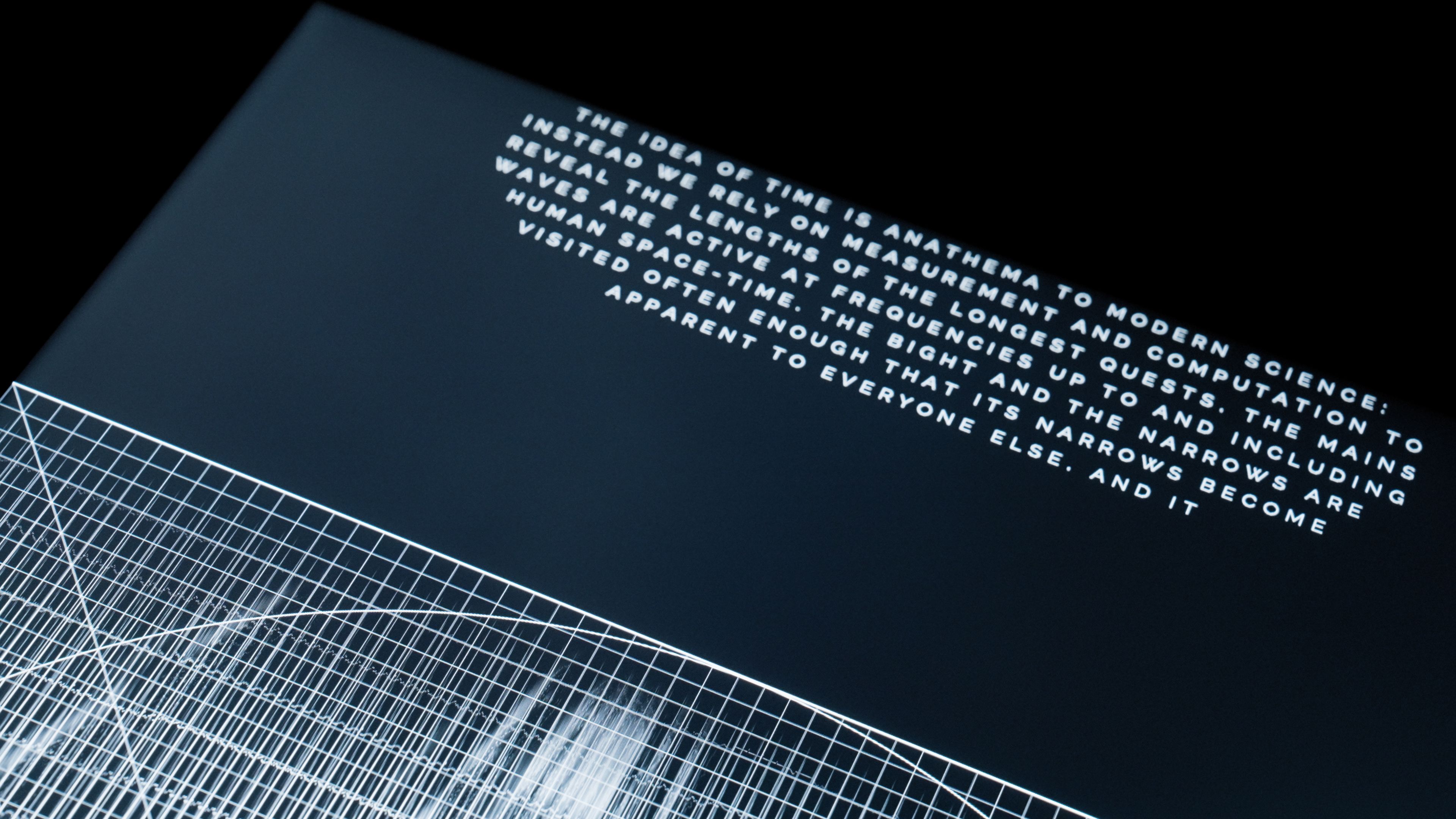
The Collection’s Focal Points
- From Pola Weiss’s Ciudad Mujer Ciudad (1978) and Fiona Tan’s The Modder Machine (1995) to melanie bonajo’s Night Soil - Fake Paradise (2015), the LI-MA Collection has a longstanding focus on works by women and members of the queer/LGBTQIA+ community reflecting on gender and identity.
- Disturbing recent works by emerging artists Valentina Gal, Ghita Skali, Eoghan Ryan, and Mateo Vega continue to question power imbalances – challenging new technologies, patriarchy, enduring (post-)colonial practices, oppressive corporate structures and environmental issues.
- The collection also includes many international perspectives and global cross-pollination. Since the 1960s, international artists like Ulises Carrion (MX), Marina Abramovic (RS), STEINA (IS), and Ghita Skali (MA) encountered a fertile environment in the Netherlands. In turn, they introduce(d) alternative narratives, perspectives and practices from all corners of the world that have influenced the Dutch media landscape.

The Collection in a Nutshell
With more than 3,000 works dating back to the 1970s, the LI-MA collection is the most extensive collection of media art in the Netherlands. The catalogue contains work by emerging talents like Frederique Pisuisse & Kent Chan, and established artists like melanie bonajo, Broersen & Lukács, Pilvi Takala, Driessens & Verstappen, Joost Rekveld, Yael Bartana, and Julika Rudelius.
The distribution collection encompasses groundbreaking pioneers like The Vasulkas, UBERMORGEN, Lydia Schouten, Madelon Hooykaas, Laurie Anderson, VALIE EXPORT, Moniek Toebosch, Nan Hoover, and Livinus van der Bundt.
Besides video art, LI-MA’s collection also houses performance art, media installations and net art, on and offline, screened and exhibited worldwide to this day by museums, cultural organisations, educational institutions and festivals. Regarding content, the collection focuses on major themes within media art: media critique, performativity, medium-specific works and narrative video art. The growth and expansion of the collection reflect media art’s sometimes tortuous but always exciting road to recognition.
A Rich Resource for Researching Media Art
LI-MA's collection is open for research. Students, journalists, researchers, programmers and curators from home and abroad are welcome to consult the catalogue online or on-site. The collection, the online catalogue, the accompanying archives and our library all present major sources for the (future) history of (Dutch) media art. Read more in our research section.
Mediakunst.net presents together the media art collections of the Van Abbemuseum, Frans Hals Museum, Stedelijk Museum Amsterdam, the Cultural Heritage Agency of the Netherlands (RCE) and LI-MA. Visitors can create an account and freely browse the affiliated collections. Visit www.mediakunst.net to further expand your media art horizon.
The History of the LI-MA Collection
In addition to all additions from the past decade, the LI-MA collection is home to collections from the now-defunct Netherlands Media Art Institute (NIMk) and other influential institutions such as the Lijnbaan Center, MonteVideo, Time Based Arts Foundation and de Appel. The overview below outlines the collection’s origins, growth, development, and continued relevance.
The Early Years and Rediscovering the Pioneers Of Video Art
In the early 1970s, renowned artists like Bill Viola, Nam June Paik, Charlemagne Palestine and Steina Vasulka began working with video. Their work and the works of several internationally known Dutch artists like Marinus Boezem, Jan van Munster, Pieter Baan Müller and Pieter Engels, who also experimented briefly with the medium in the 1970s, became part of the burgeoning MonteVideo collection.
However, well before the first established institutions began collecting video art, various small-scale centres emerged in different places around the Netherlands. These artist centres – by and for artists – provided facilities and helped promote video use. The earliest examples included Agora Studios (Maastricht), the Lijnbaan Center (Rotterdam) and artist initiatives by Miguel-Ángel Cárdenas and Jack Moore, both in Amsterdam.
Unfortunately, many works completed in this early period of Dutch video art remained obscured for a long time. When the works finally resurfaced in the 1990s, surprising discoveries were made. These include works by Dennis Oppenheim, Terry Fox, Wim Gijzen, Nan Hoover and Tajiri that paved the way for subsequent generations.
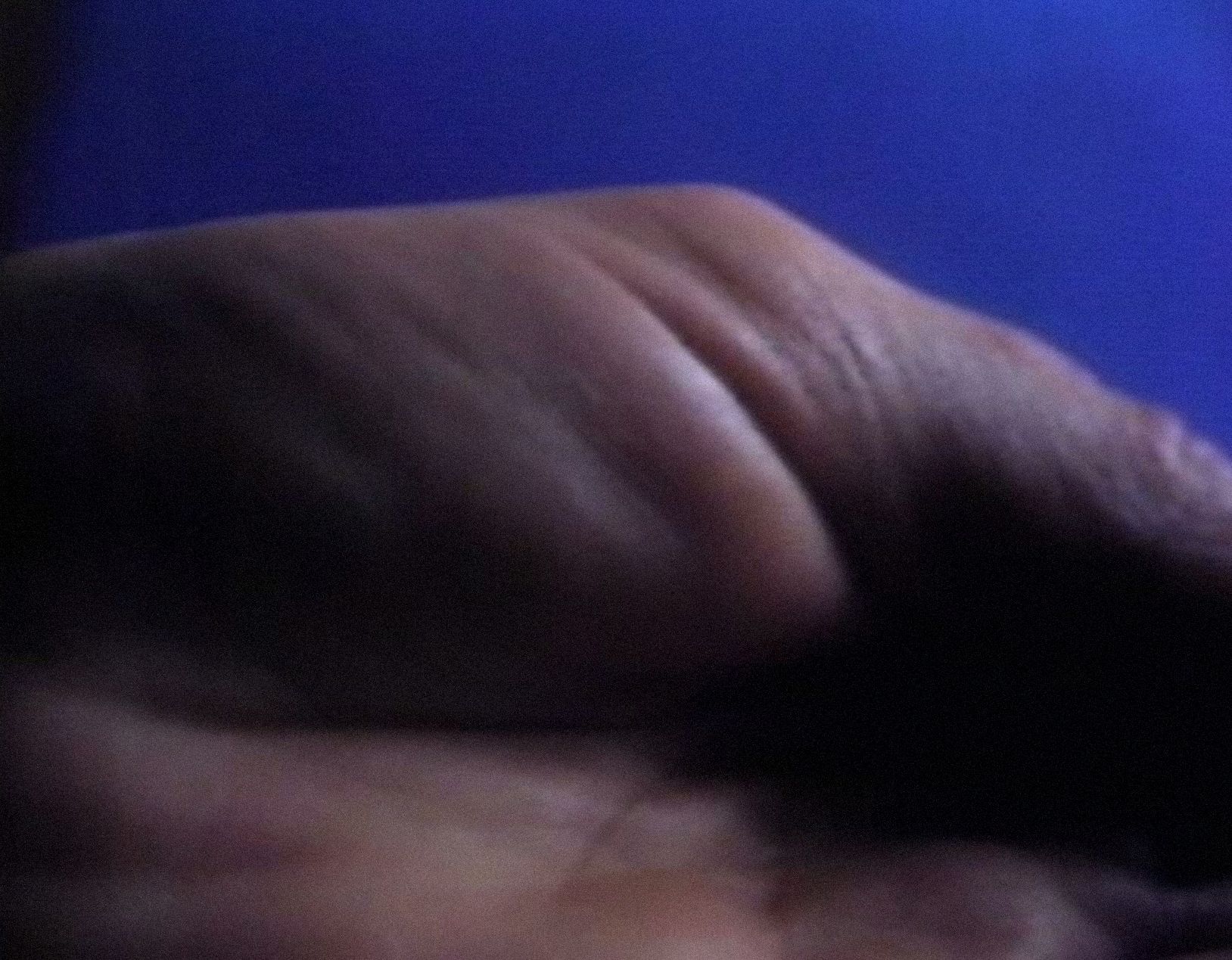
De Appel: Adding Performance Art to the Mix
Wies Smals founded de Appel in 1975 as a reaction to the lack of platforms and possibilities to show contemporary art practices like performance, video and conceptual art at the time. These time-based practices, without a marketable object, required a different kind of space and new methods of presentation. Nowadays, the history of de Appel is most known for this early experimental period when performance, body art and early video art were developed and shown. Smals had an open and flexible attitude towards the identity and profile of de Appel.
In addition to registering events taking place in their own gallery, de Appel also had a collection of unique works by Vito Acconci, Laurie Anderson, Gina Pane, Carolee Schneemann, Moniek Toebosch, Douglas Davis, Ulrike Rosenbach, Lawrence Weiner, Joan Jonas, Alison Knowles and others. LI-MA’s collection has been significantly expanded by de Appel’s particularly rich collection of performance art registrations on video.
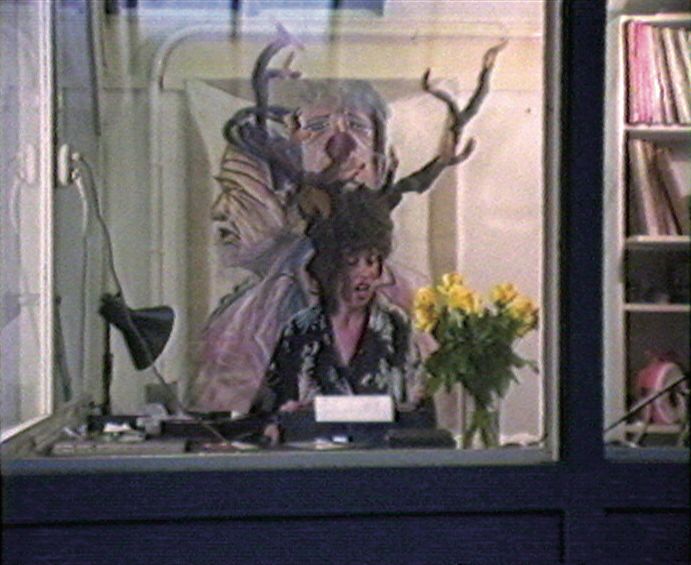
MonteVideo: a Groundbreaking Gallery for Electronic Art
René Coelho founded the gallery MonteVideo in 1978. MonteVideo specialised in electronic art and, more specifically, video art and media installations that pushed the boundaries of their mediums’ creative possibilities and technical qualities.
A vital impetus and inspiration for establishing the institution was the work of Dutch video pioneer Livinus van de Bundt, who subsequently was the first artist to have work exhibited in the gallery. The Vasulkas, Bert Schutter, Peter Bogers, Matthew Schlanger and many others soon followed.
In addition to the works exhibited in the gallery, MonteVideo started actively collecting and distributing the works of some highly prominent artists. Gary Hill, Shelly Silverand and Gabor Body are just a few of the artists who were actively represented and had works affiliated with MonteVideo.
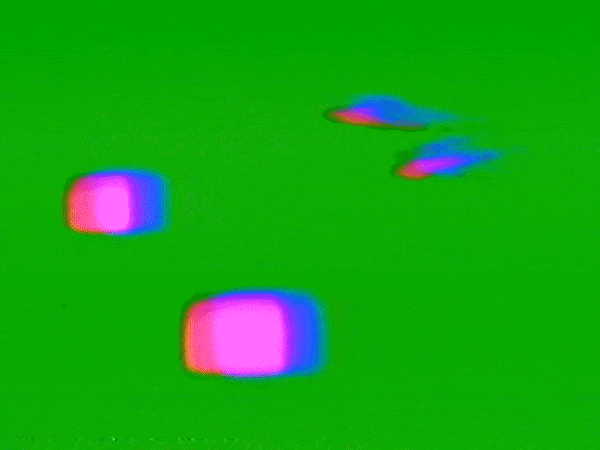
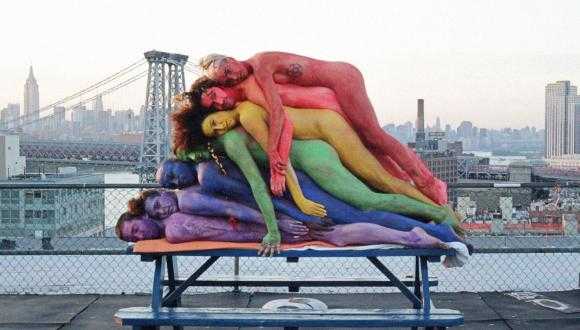
still from melanie bonajo, Night Soil – Economy of Love, 2015
Time Based Arts Foundation: Supporting Video Art’s Distribution
In the early 1980s, leveraging de Appel as its launchpad, a collective for video artists emerged and grew into the renowned Time Based Arts Foundation. Its collection comprised works by artists based in the Netherlands at the time: Abramović/Ulay, Stansfield/Hooykaas, Yvonne Oerlemans, Ben d’Armagnac, Christine Chiffrun and Lydia Schouten, plus works by international artists such as Mona Hatoum and General Idea.
Time Based Arts Foundation pursued an active collecting policy that invited any video artist to submit their work. As the collection grew, it became very diverse and presented a significant overview of the various uses of video in the visual arts. Until the 1990s, the organisation played an essential role in collecting, distributing and supporting video art.
From Netherlands Media Art Institute to LI-MA
In 1994, pressured by the Amsterdam City Council, the Time Based Arts Foundation merged with MonteVideo. This union marked the inception of the Netherlands Media Art Institute (NIMk).
Until the end of 2012, NIMk played a vital role in the production, collection, distribution and preservation of media art in the Netherlands and worldwide. Unfortunately, due to budget cuts, NIMk was forced to close its doors on 1 January 2013.
Experts from the former Netherlands Media Art Institute, dedicated to providing continued, long-term access to these pioneering works of media art, established the independent foundation LI-MA. From that day on, LI-MA became the international platform for sustainable access to media art.
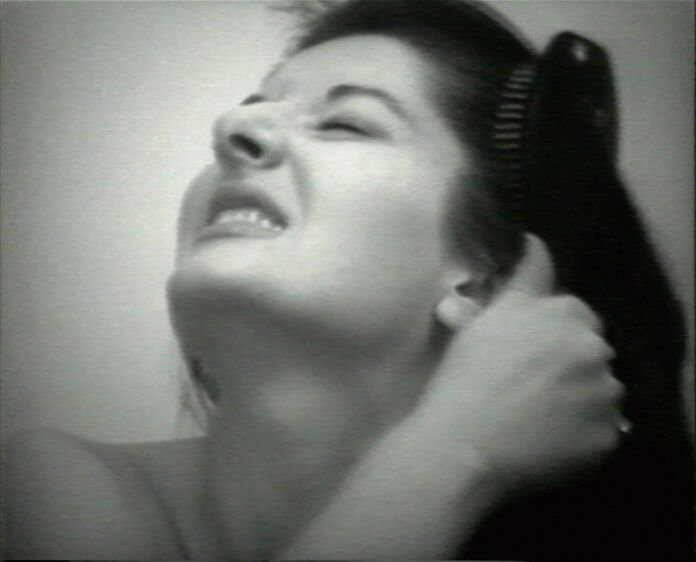
LI-MA: Caring for the Past with a Keen Eye for the Future
Besides continuing to care meticulously for these historically significant collections, LI-MA's own collection has expanded over the past decade.
The diverse and inclusive nature of the current LI-MA collection has been achieved through an active scouting approach and a diverse artistic team, expanding the range of artists and artworks included.
Pivotal to this approach has been the careful balancing of our commitment to local artists, with whom we often have long-standing relationships, and the inclusion of the work of international artists working or studying in the Netherlands. By cultivating and caring for a collection that reflects diverse artistic voices, LI-MA has established itself as a vital space for media art that reflects the broader culture and actively shapes it.
In addition to fostering the work by established artists and pioneers in the field of media art, LI-MA also makes a concerted effort to include works by emerging artists. These works build upon those of well-known artists in the collection, creating a dynamic dialogue between different generations of media artists. This strategy ensures that the collection remains relevant and engaging and promotes a sense of continuity and evolution within the field of media art.
Going forward, LI-MA remains committed to showcasing both emerging and established artists to ensure a diverse and forward-looking collection. This commitment includes regularly introducing new perspectives and innovative approaches, such as performance and installations, into the realm of media art.

Media Art Distribution: A Unique and Empowering Model
What precisely does the distribution of media art entail? Our distinctive model encapsulates a particular and little known domain aimed at supporting artists.
A Non-Exclusive and Global Distribution Model
Stemming from the history of artists’ film and video, the basic model situates a media art distributor like LI-MA as an intermediary between the artist and various outlets that might represent their work. This tasks the distributor with that art’s promotion and circulation, which targets exposure rather than income derived from exclusivity.
Such responsibilities include preparing archival and presentation files, stills, excerpts and promotional material; organising activities and events; working with festival programmers and curators; and including works in the distributor’s catalogue and submitting them to festivals. A fee is charged for each presentation of a work based on its type, length, and the number of screenings or duration of an exhibition. The commission is then divided between the artist and the distributor based on a percentage split negotiated between parties.
Empowering artists through not-for-profit distributors
Media art distribution is pivotal to an artist's presence, visibility and financial sustainability. In the distribution of media arts, not-for-profit distributors play a crucial role in terms of visibility, talent development and (future) accessibility. As key ambassadors, these organisations present works in local and international contexts, from film and art festivals to one-off (online) screenings, exhibitions and gallery collaborations. Through adequate distribution, these works are exposed in new contexts to new and existing audiences at home and abroad.
As film historian Helen Westerik wrote in 2017, artists themselves could assume the responsibility for distribution and rights, galleries for selling the work, lawyers for legal matters, and curators can search on their own for artworks, “yet, to have organisations that do all of this above and beyond is priceless. There are no other institutions in which the knowledge, the technical, legal, promotional, organisational expertise is coupled with a deep understanding of the material. This leads to a practice in which not just the distribution, but also the conservation of media art works is of the greatest importance. All the knowledge invested so far, will as- sure that we can still access these artists’ work in the future. We need caretakers of the past, with a keen eye for the future.”
A comprehensive overview of new developments is outlined in our publication A New Era for the Distribution of Media Art.
Thumbnail image: Rene Reitzema, De Weg, 1987 | Header image: Joost Rekveld, #37, 2009
Videostills in descending order
Zeno van den Broek, Forming Folds, 2022 (Photographer: Tanja Busking)
Ulises Carrión, A Book, 1978
melanie bonajo, Night Soil – Economy of Love, 2015
Nan Hoover, Landscape, 1983
Moniek Toebosch, Verzamelde beelden/toevallen/af- en toespraken, 1983
Livinus & Jeep van de Bundt, Moiré, 1975 (video)
Arno Coenen & Rodger Werkhoven, Let's Be Friends, 2023




